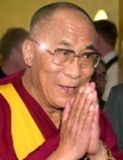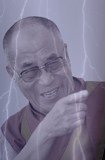
Lama Osel Before and 'Oz' After (image from El Mundo article)
23 years ago a Spanish baby boy was recognised by the Dalai Lama and other important Tibetan lamas to be a reincarnation (tulku) of a well known Lama called Thubten Yeshe. His story was widely reported and received wider attention as it happened to coincide with the release of a Holywood blockbuster called The Golden Child (starring Eddie Murphy!) which was based around a story about a young reincarnated lama.
After a short flurry of media attention the boy, named Osel Hita Torres, dropped back into the relative obscurity of the Tibetan Buddhist tradition. Within the tradition he remained an important figure however and was sent to a monastery in India to receive a traditional Tibetan education alongside tutoring in Western subjects. High hopes were held by Lama Yeshe’s followers that Osel would take up the mantle of leadership vacated by Lama Thubten Yeshe and usher in an era of greater integration between Tibetan Buddhism and the Western world.
These hopes were rather soundly dashed a few days ago however when Osel gave an interview to a Spanish newspaper El Mundo in which he stated that he was now agnostic and more interested in cinematography than being a spiritual figurehead. He also spoke critically of his upbringing describing how:
At 14 months I was recognized and taken to India. I dressed in a yellow hat, I sat on a throne, people worshipped me … I was taken away from my family and put in a medieval situation in which I suffered a lot. It was like living a lie.


